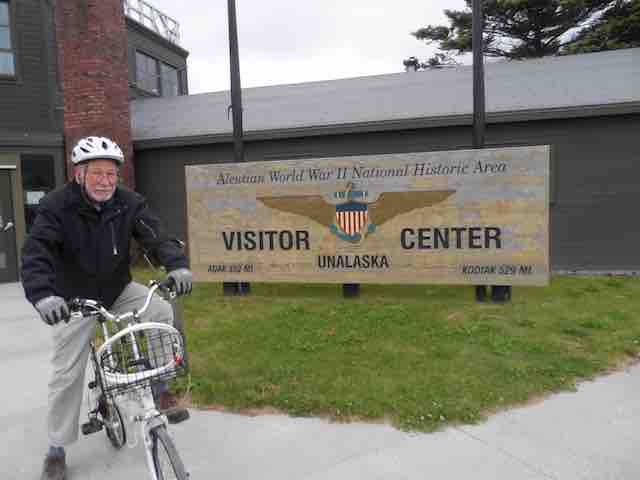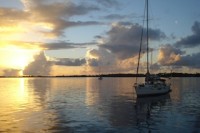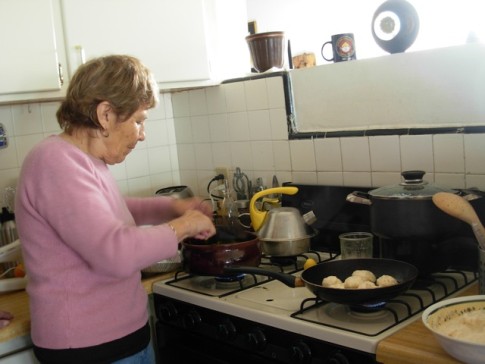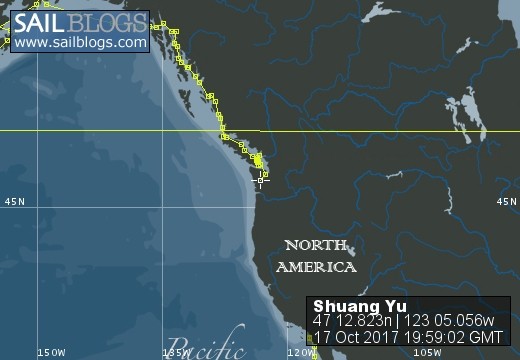
Joy of Cruising
17 October 2017 | Boat position at Shelton: 47°12.82’N; 123°05.01’W
16 October 2017 | Boat position at Shilshole Marina: 47°40.65’N; 122°24.59’W
15 October 2017 | Boat position at Friday Harbor: 48°32.20’N; 123°0.59’W
27 September 2017 | Boat position on Granville Island: 49°16.35’N; 123°08.24’W
26 September 2017 | Boat position on Granville Island: 49°16.35’N; 123°08.24’W
22 July 2017 | Boat position at Granville Island: 49°16.35’N; 123°08.24’W
21 July 2017 | Boat position at Vancouver Rowing Club, Canada: 49°17.77’N; 123°07.85’W
20 July 2017 | Boat position at the Vancouver Rowing Club, Canada: 49°17.77’N; 123°07.85’W
19 July 2017 | Boat position at the Vancouver Rowing Club: 49°17.77’N; 123°07.85’W
18 July 2017 | Boat position in Active Pass: 48°51.64’N; 123°18.54’W
17 July 2017 | Boat position at Otter Cove, Pender Island, Canada: 48°47.84’N; 123°18.51’W
15 July 2017 | Boat position at Port Bedwell, Pender Island, Canada: 48 44.97'N; 123 13.97'W
14 July 2017 | Boat position at RVYC: 48 27.19'N; 123 17.73'W
13 July 2017 | Boat position at RVYC: 48 27.19'N; 123 17.73'W
12 July 2017 | Boat position at SNSYC: 48 40.44'N; 123 25.02'W
12 July 2017 | Boat position at SNSYC: 48 40.44'N; 123 25.02'W
11 July 2017 | Boat position at SNSYC: 48 40.44'N; 123 25.02'W
10 July 2017 | Boat position at Ganges: 48 51.00'N; 123 29.53'W
09 July 2017 | Boat position at Ganges: 48 51.00'N; 123 29.53'W
08 July 2017 | Boat position at Montague Harbour: 48 53.63'N; 123 24.03'W
Dutch Harbor 5
06 July 2016 | Boat position at the Small Boat Harbor, Dutch Harbor: 53 52.611'N; 166 33.123'W
Pam Lau and Ted Berry

Picture: Ted in front of the Aleutian WWII museum.
During WWII the Japanese occupied Attu and Kiska Islands and then on June 3rd, 1942, they bombed Dutch Harbor. The museum has films (modern and WWII Newsreel), pictures and documents about these events. I found some of the personal stories relating to US soldiers, native Aleuts and Japanese very interesting. The US soldiers suffered from cold, isolation and loneliness. Mail came by ship from the mainland and could take up to five or six months. Some of the men went home in straight jackets because they went insane. Others turned to alcohol. One local brew of the period (White Lightning) was a white liquid (alcohol) distilled in a fire extinguisher container, using a gas line from a wrecked jeep and a five-gallon vinegar jug. According the literature, white lightning was so strong that it could burn a hole in metal and etch glass. They referred to it as the "Aleutian Solution".
Pilots had a tough time keeping warm in temperatures said to get down to 86 degrees Fahrenheit below zero. It was so cold that when a person's hand touched metal it immediately turned white. The literature in the museum said that they kept flying just to keep warm. Under foggy and cloudy conditions, without radar, it was difficult for them know where they were. Sometimes they flew just above the ocean waves in order to get their bearings. The situation was horrifying.
Editor's note: Nearly all the time we were in the Aleutians it was foggy, thick fog, especially in the west. Even approaching the Island Chain from the southwest it was foggy. Without radar, AIS and GPS we would have been lost. With radar we can "see" islands and other craft, with AIS we can see other ships and they can see us, and, with GPS we can see where we were on the charts. GPS and AIS are recent inventions which they did not have in WWII. They had radar but maybe not in small planes.
After the Kiska was captured by the Japanese, an America got away and hid in the hills. He lived in a cave and ate grass and worms for a few months. He suffered from sickness and malnutrition and was down to 80 pounds. One day he gave up the struggle for survival and surrendered to the Japanese by tying a white cloth to a stick. They nursed him back to health and treated him well. He was grateful for the kindness of his enemies.
Besides the museum, we saw many small gun emplacements ("pill boxes") all around Dutch Harbor. There is also a WWII radio house for communications and a long underground tunnel for military activities.
According to the articles in the museum, Dutch Harbor was a terrible place. A wartime joke on display said, "A soldier stood at the Pearly Gates. His face was wan and old. He gently asked the man of fate for admission to the fold. "What have you done," St. Peter asked, "to gain admission here?" "I've been in the Aleutians for nigh unto a year." The gates swung open sharply as St. Peter tolled the bell. "Come in," said he, "and take a harp. You've had your share of hell." Written by Boswell Boomhower, 1943, Warrant Officer.
Thank goodness the modern day Dutch Harbor seems quite nice and most residents we talked to like living here.
During WWII the Japanese occupied Attu and Kiska Islands and then on June 3rd, 1942, they bombed Dutch Harbor. The museum has films (modern and WWII Newsreel), pictures and documents about these events. I found some of the personal stories relating to US soldiers, native Aleuts and Japanese very interesting. The US soldiers suffered from cold, isolation and loneliness. Mail came by ship from the mainland and could take up to five or six months. Some of the men went home in straight jackets because they went insane. Others turned to alcohol. One local brew of the period (White Lightning) was a white liquid (alcohol) distilled in a fire extinguisher container, using a gas line from a wrecked jeep and a five-gallon vinegar jug. According the literature, white lightning was so strong that it could burn a hole in metal and etch glass. They referred to it as the "Aleutian Solution".
Pilots had a tough time keeping warm in temperatures said to get down to 86 degrees Fahrenheit below zero. It was so cold that when a person's hand touched metal it immediately turned white. The literature in the museum said that they kept flying just to keep warm. Under foggy and cloudy conditions, without radar, it was difficult for them know where they were. Sometimes they flew just above the ocean waves in order to get their bearings. The situation was horrifying.
Editor's note: Nearly all the time we were in the Aleutians it was foggy, thick fog, especially in the west. Even approaching the Island Chain from the southwest it was foggy. Without radar, AIS and GPS we would have been lost. With radar we can "see" islands and other craft, with AIS we can see other ships and they can see us, and, with GPS we can see where we were on the charts. GPS and AIS are recent inventions which they did not have in WWII. They had radar but maybe not in small planes.
After the Kiska was captured by the Japanese, an America got away and hid in the hills. He lived in a cave and ate grass and worms for a few months. He suffered from sickness and malnutrition and was down to 80 pounds. One day he gave up the struggle for survival and surrendered to the Japanese by tying a white cloth to a stick. They nursed him back to health and treated him well. He was grateful for the kindness of his enemies.
Besides the museum, we saw many small gun emplacements ("pill boxes") all around Dutch Harbor. There is also a WWII radio house for communications and a long underground tunnel for military activities.
According to the articles in the museum, Dutch Harbor was a terrible place. A wartime joke on display said, "A soldier stood at the Pearly Gates. His face was wan and old. He gently asked the man of fate for admission to the fold. "What have you done," St. Peter asked, "to gain admission here?" "I've been in the Aleutians for nigh unto a year." The gates swung open sharply as St. Peter tolled the bell. "Come in," said he, "and take a harp. You've had your share of hell." Written by Boswell Boomhower, 1943, Warrant Officer.
Thank goodness the modern day Dutch Harbor seems quite nice and most residents we talked to like living here.
Comments
| Vessel Name: | Shuang Yu |
| Vessel Make/Model: | Catalina 400 |
| Hailing Port: | San Diego |
| Crew: | Ted Berry and Pam Lau |
| Home Page: | www.sailblogs.com/member/tedandpam/ |
| Social: |

Who: Ted Berry and Pam Lau
Port: San Diego



